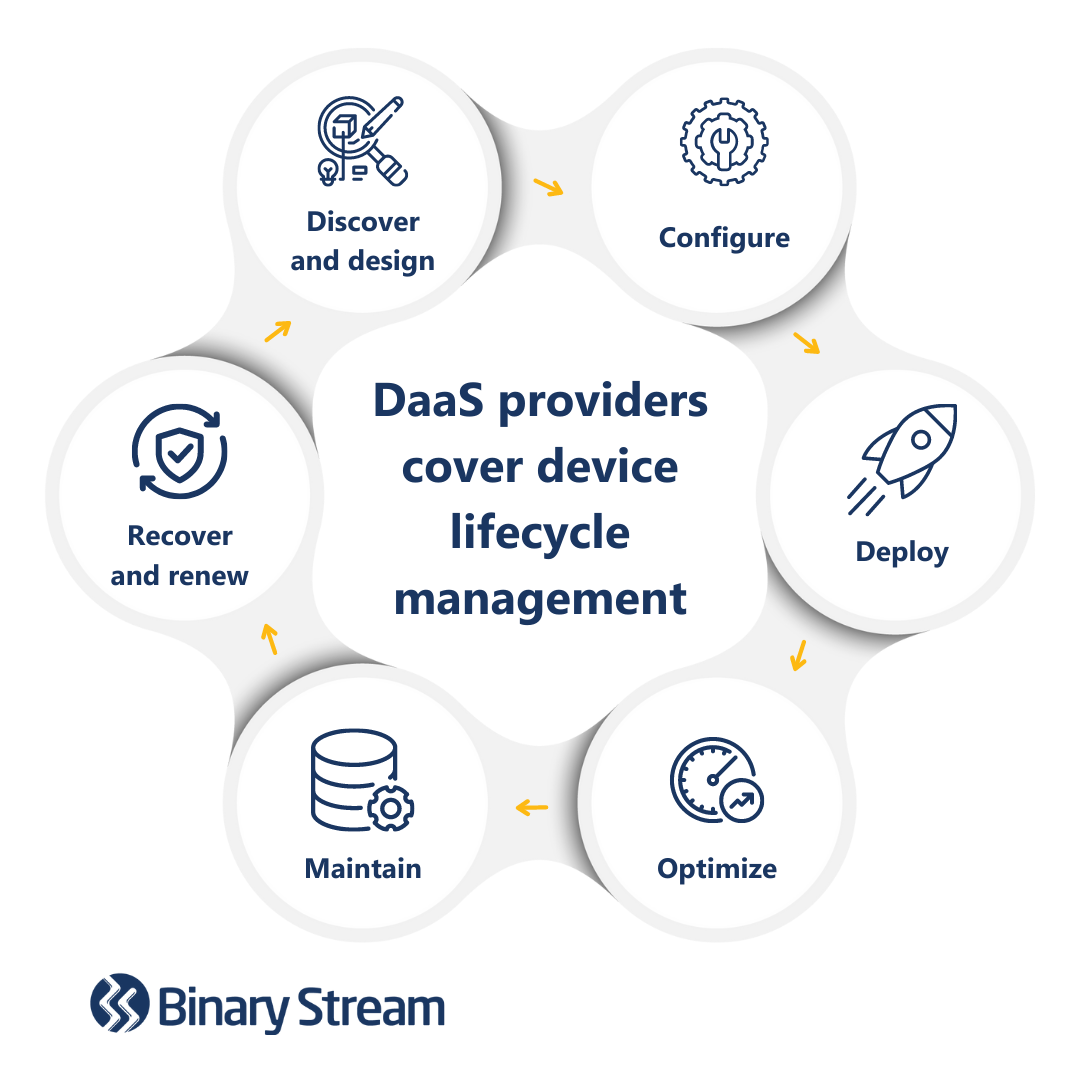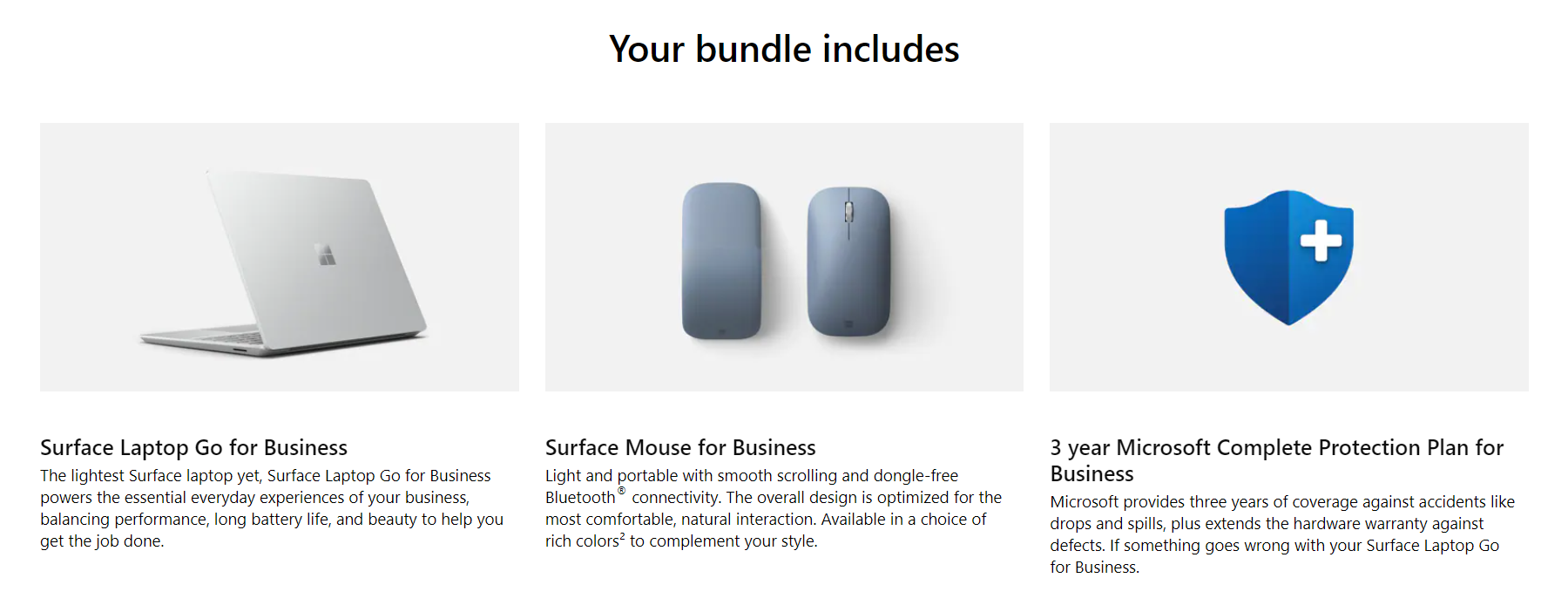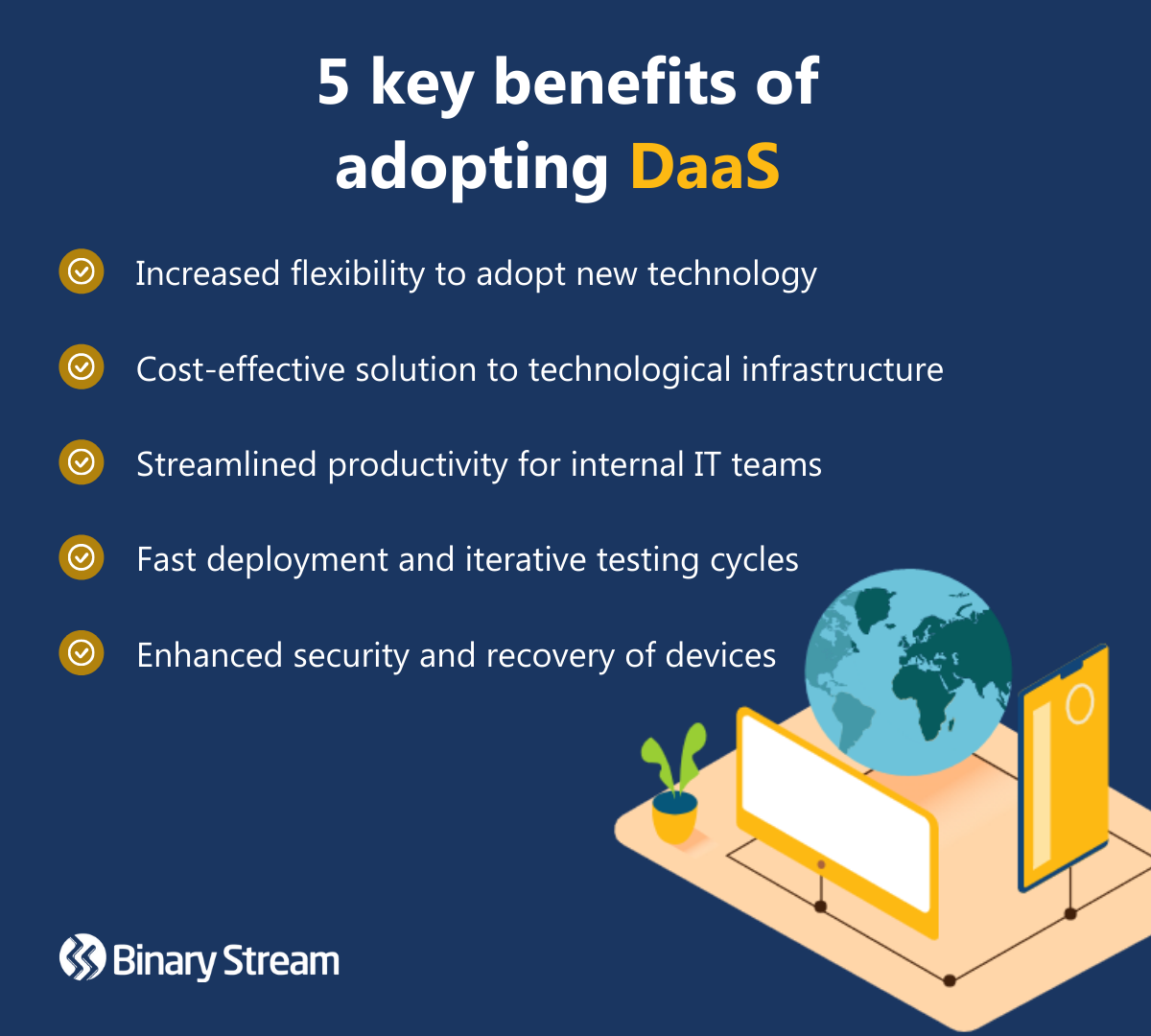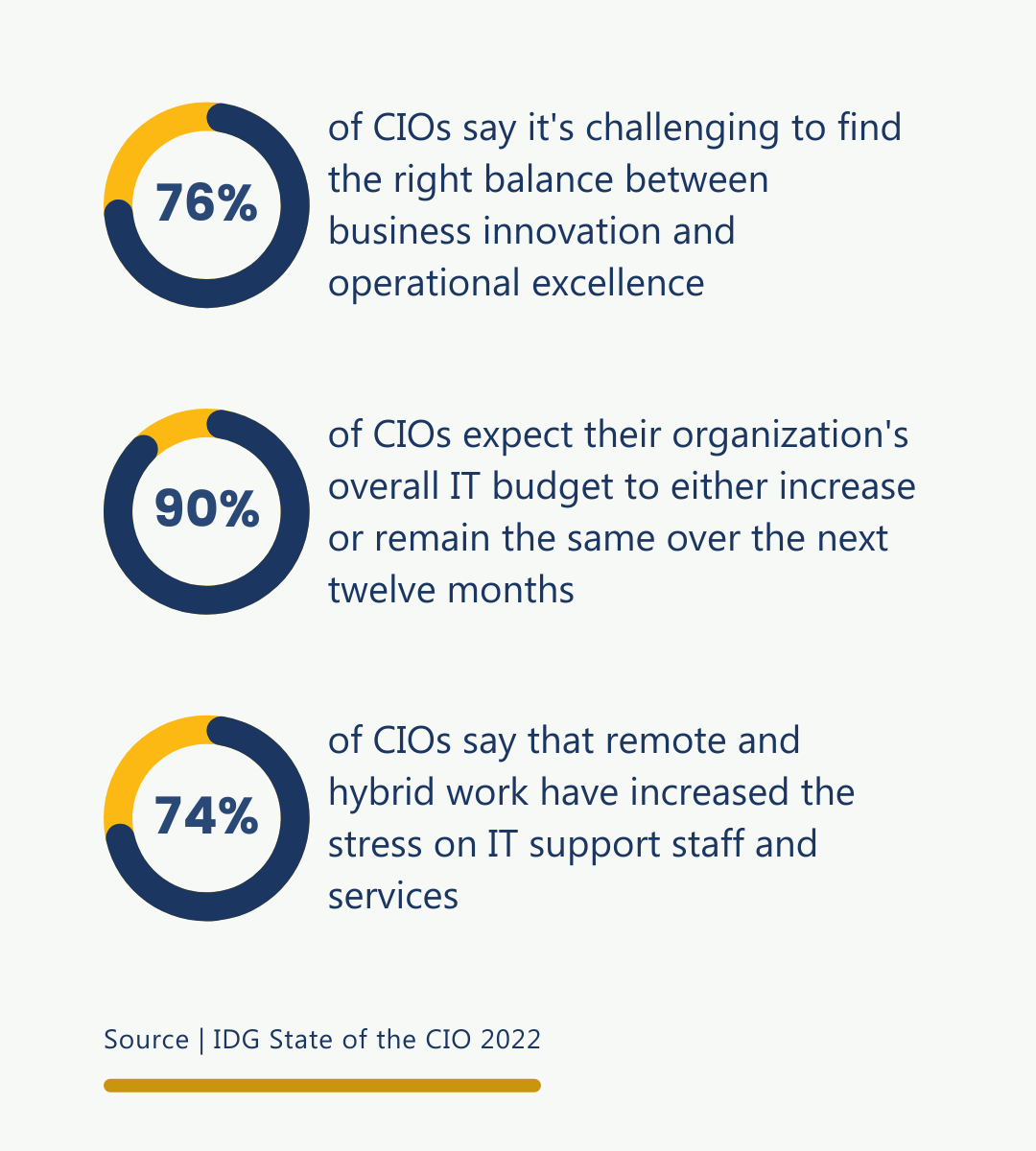As technology continues to advance at an exponential rate, retailers are feeling pressure from their customers to stay informed and keep their systems updated. Given that traditional lease structures, like a rent-to-own model, can’t accommodate the rapid evolution of technology some retailers are turning to new solutions and embracing financial transformation.
Device as a service (DaaS) enables retailers to access the latest hardware and software on a subscription basis while the provider covers life cycle management of the devices. This blog will answer frequently asked questions about DaaS to help retailers gain a clearer understanding of why this subscription model is becoming a popular alternative to traditional leasing practices.
Interested in a particular aspect of DaaS? Skip ahead by clicking on the question below.
- What is Device as a Service (DaaS)?
- What is the difference between DaaS and SaaS?
- What is a DaaS contract?
- How is a DaaS contract different from an operating lease?
- What is an example of a DaaS solution?
- Why do retailers switch from operating leases to DaaS?
- What are the benefits of DaaS?
- How does DaaS enable retailers to adopt new technology?
- Why is DaaS a cost-effective solution to technological infrastructure?
- How can DaaS benefit internal IT teams?
- How does DaaS enable fast deployment and iterative testing cycles?
- How does DaaS support enhanced security and device recovery?
What is Device as a Service (DaaS)?
Device as a Service (DaaS), less commonly PC as a service (PCaaS), is a fractional ownership subscription business model where buyers can pay a recurring fee in exchange for hardware, software, and lifecycle management.
DaaS originally meant Desktop as a Service where virtual desktop infrastructure (VDI) is hosted and maintained in the cloud by a service provider in return for a fixed monthly fee. Although, that definition is starting to fizzle out because VDI can be included in a DaaS contract. For the remainder of this blog, DaaS will refer to Device as a Service.
What is the difference between DaaS and SaaS?
Software as a Service (SaaS) and DaaS both allow retailers to have access to technological infrastructure on a subscription basis; however, SaaS only provides select software whereas DaaS offers hardware and device life cycle management as well. Therefore, SaaS can be accessed entirely through the cloud while DaaS can be partially offered via the cloud.
What is a DaaS contract?
A DaaS contract is similar to a licensing agreement and details how the customer can and cannot use the devices and software for the duration of their subscription. Providers often offer multiple subscription tiers at different price points that include additional features like enhanced security, or advanced customer support. The contract identifies which tier the customer chose, their rights and responsibilities, and the subscription fee. DaaS agreements are all unique and dependent on the provider.

How is a DaaS contract different from an operating lease?
At first glance, DaaS seems like a $1 buyout or fair market value (FMV) operating lease; however, there are some key differences that distinguish it as a subscription business model. Unlike a lease agreement, DaaS contracts demonstrate the following components:
- No option or intent for customer to own device(s)
- Pricing is standardized and determined per device per month
- Technology provider fully manages and maintains device(s)
The as-a-service rental-retail model demonstrates a relational approach to fractional ownership. Effective DaaS strategies focus on developing strong customer retention initiatives while budgeting for higher customer acquisition costs to support a growing, loyal customer base. Subscription services forgo traditional models that are primarily concerned with making the sale and then moving on to another prospect. Instead, they require sustained contact with customers through a variety of touchpoints to deliver the highest standard of customer service and increase the likelihood of contract renewals.
What is an example of a DaaS solution?
DaaS is an emerging model that’s been adopted by a few vendors. Microsoft currently offers a few DaaS initiatives. Surface as a service is customizable a bundle subscription that can include Windows 10, Office 365, and Teams on its Surface Book complete with a Protection Plan for retailers and consumers to purchase through a paid subscription service.

Why do retailers switch from operating leases to DaaS?
The as-a-service business model is alluring to many brands for its low barrier to entry, accessibility, and scalability. By switching from an operating lease to DaaS, retailers can decrease downtime, liability, and overhead. Any IT expenses related to devices count as operating expenses rather than capital expenses, which makes them tax deductible.
What are the benefits of DaaS?
- Increased flexibility to adopt new technologies
- Cost-effective solution to technological infrastructure
- Streamlined productivity for internal IT teams
- Fast deployment and iterative testing cycles
- Enhanced security and recovery of devices

How does DaaS enable retailers to adopt new technology?
As technology continues to rapidly evolve, so too does business and consumer expectations. Traditional rentals and equipment leases can be rigid, with many limiting clauses that lock brands into specific technologies and timeframes. DaaS allows brands to only pay for the use of equipment and provides them with the option to upgrade to the newest improved devices for a similar monthly fee. The end-user has consistent access to the latest features and capabilities and can maintain top notch technology without spending a fortune.
As well, when vendors announce that a hardware or software has reached its end of life, retailers no longer need to scramble to restructure their IT infrastructure. The costs and responsibility of secure device disposal fall to the technology provider, reducing common pitfalls that may otherwise jeopardize a company’s bottom line.
Why is DaaS a cost-effective solution to technological infrastructure?
Technological resources don’t have to be an accounting black box. DaaS is a cost-effective solution with no upfront capital investment, maintenance and management fully covered by the technology provider, and usually lower monthly fees given the customer is not following a rent-to-own model. Additionally, since it’s a subscription service, brands can more accurately predict monthly cash flow and categorize device-related IT expenses as operating expenditures (OPEX) instead of capital expenditures (CAPEX).
CAPEX are all costs for development, design, or delivery of non-consumable aspects of a product or system. OPEX are all recurring costs for a product, system, or company. Therefore, purchasing a PC would count as CAPEX, but the subscription fee for a DaaS solution would be classified as OPEX. Unlike CAPEX, OPEX are tax deductible.
The simplicity of a generally standardized per device per month pricing model is beneficial when finance teams budget and forecast projected growth within a company. Customers can independently calculate the costs and effects of expanding or rotating in new devices at any point in their growth journey, ensuring that they can secure the best deals.
How can DaaS benefit internal IT teams?
There is a considerable opportunity cost for brands when internal IT teams are required to perform the routine work of configuring and managing end-user devices. Given that DaaS providers are fully responsible for the device management lifecycle, IT staff no longer need to be weighed down with tasks like procurement, provisioning, support, or maintenance. Instead, freeing them/allowing them to focus on big picture projects that drive business productivity.

How does DaaS enable fast deployment and iterative testing cycles?
Traditional leasing agreements can waste a significant amount of time and money if it turns out that the newly installed hardware is less than optimal for everyday use. DaaS allows teams to test out new technologies in low quantities with minimal overhead before the business adopts them. Since it’s easy to scale up or down with a subscription pricing model, teams can readily analyze performance data and adjust their testing cycles if the initial device is not up to standards.
Brands can also benefit from zero touch deployment, which is a high-volume deployment strategy whereby the provider delivers the devices fully configured and ready for use. Your internal IT team won’t have to be involved. If a new employee joins your company, you can order a new device and have it shipped to a location of your choice. The employee can then login and start working immediately.
How does DaaS support enhanced security and device recovery?
Things happen—employees may accidentally spill coffee on their computer or leave their phone behind on a bus. Mistakes like these can waste hours getting your employees set up again to complete their work, not to mention the resources spent containing potential security breaches. Some businesses stock lockers full of extra equipment to try to mitigate this risk, which is an inefficient use of resources.
DaaS eases these pain points with efficient service replacement and enhanced security protocols. Trusted providers work with manufacturers to procure devices that have been vetted for security controls at each junction along the supply chain. An end-to-end DaaS engagement can include unified endpoint management tools that permit brands advanced cloud-based security capabilities like remotely locking or wiping devices.
Introducing Subscription Billing Suite
A successful DaaS business model relies on handling large volumes of data, forecasting informed by real-time analytics, and the ability to seamlessly update existing contracts. Without the proper infrastructure in place to support your growth journey, your company will likely be overwhelmed and unable to scale appropriately. A robust subscription management solution, like Subscription Billing Suite, can not only manage recurring billing, invoicing, and recognition challenges, but also supports flexible pricing structures, real-time reporting, and regulatory compliance. It’s available as an embedded extension in Microsoft Dynamics 365 Finance and Operations, Business Central, and GP.

